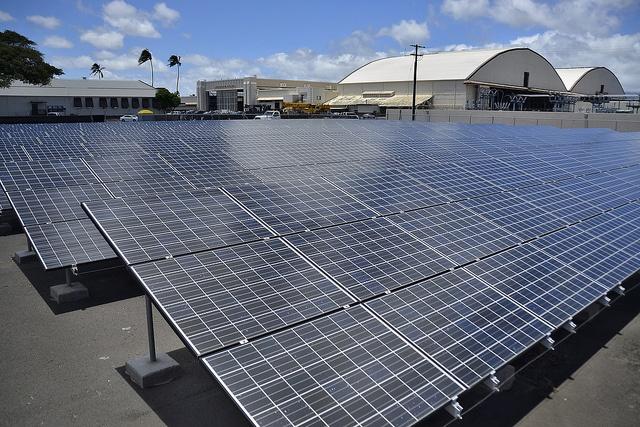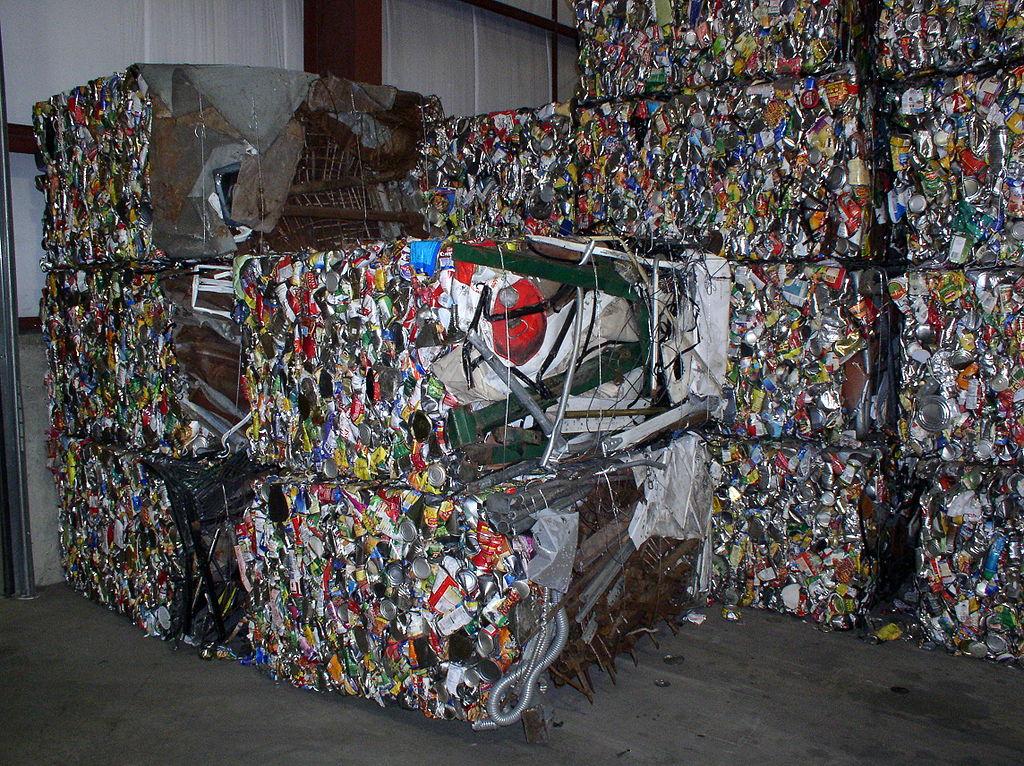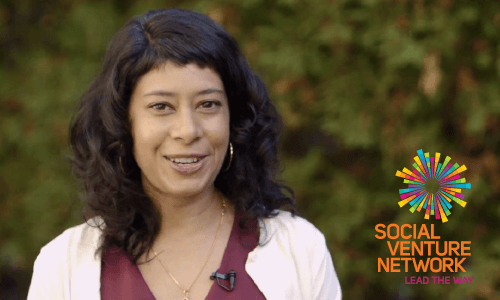More Than a Trend: Why We Must Focus on Women and Girls


Editor's Note: This post originally appeared on Unreasonable.is.
By Daniel Epstein
Today, with so many initiatives focused on women and girls, the conversations around the importance of gender dynamics may feel trendy. I agree. That said, I’m writing this post because I believe that this trend is warranted, it’s accurate, and it needs to pick up momentum and transform from a trend to a movement. We have a long way to go in convincing the world about the importance of investing in women and girls globally. Yes, a lot of people are talking about it, but in my mind, not nearly enough.
Focusing our efforts on women and girls, especially those living in poverty, is critical if we are ever going to have a chance at living in a world in which no one is limited by their circumstances. I’d argue there is possibly nothing more important that we can rally behind.
Let me answer the question “Why women and girls?”
It is estimated that 250 million adolescent girls live in poverty and are more likely than boys to be uneducated, to be married at a young age and to be exposed to HIV/AIDS. Why should you care? Here are a few statistics from the Girl Effect Factsheet that help illuminate the situation.- When a girl in the developing world receives seven years of education, she marries four years later and has 2.2 fewer children. And yet, in 19 sub-Saharan African countries, secondary school completion rates for adolescent girls is below 5 percent.
- Worldwide, nearly 50 percent of all sexual assaults are against girls aged 15 years or younger. There is strong correlation between sexual assaults and prevalence of HIV/AIDS. According to 2014 numbers from the Population Council, 76 percent of young people aged 15 to 25 who live with HIV in sub-Saharan Africa are female.
- Girls from poor families are nearly twice as likely to marry before 18 than girls from wealthier families. This is concerning from multiple dimensions. For example, child brides have a pregnancy death rate double that of women in their 20s.
Moving beyond “why” and focusing on “how”
But talking about the importance of removing constraints for women and girls isn’t enough. Though this conversation is important, it’s time we also go beyond explaining “why” and begin to experiment to better understanding “how” – how we can most effectively impact women and girls in poverty. At Unreasonable, we are doing our best to put our money, actions and focus where our mouth is. And we are always looking for collaborators in the process.So, in November 2014, we launched the Girl Effect Accelerator in partnership with the Nike Foundation (watch the TED-style presentations of the participating entrepreneurs here). This was the world’s first accelerator dedicated to working with entrepreneurs who are positioned to measurably benefit millions of women and girls in poverty (… and we really mean it).
Our goal with this partnership is to work with the fastest moving startups in emerging markets who are keen to put a dent in poverty, and align their trajectory around key issues that affect women and girls in poverty — issues that their business is uniquely positioned to take on. Each of the 10 participating companies agreed to measure their impact on women and girls on a quarterly basis and into perpetuity.
We are just now identifying their measurable impact on girls and by the end of this year, we should have some very interesting data. It’s this data, combined with ongoing conversations with the companies, that will allow us to begin to pull insights from our entrepreneurs — further identifying scalable solutions to meet the needs of millions of girls. In the process, we will discover patterns in regards to both what is working and, equally as important, what is not.
An accelerator isn’t enough …
When we were first in conversations with the Nike Foundation around launching the Girl Effect Accelerator, we were thinking of launching a distinct fund devoted exclusively to investing into companies already positioned to benefit girls in poverty. However, upon further reflection, we realized that launching a sidecar fund focused on girls, though impactful, was the wrong posture. Instead, we need to bake the measurement of how all our companies at Unreasonable affect women and girls in poverty (not just some of them).So in May, when my partner Ashok Reddy and I launch Unreasonable Capital, we have agreed to ask 100 percent of the investments in our portfolio to track a core metric highlighting their impact on women and girls in poverty. Yes, there’s always more that can be done and yes, it will be difficult to draw direct lines of attributable impact for all of our companies. But at a base level, we believe that what you measure is an indicator of what you value. And what you measure will ultimately change behavior.
It’s just the beginning …
This is just the beginning for us. We are new to the space of looking at how for-profit entrepreneurs can have a meaningful and measurable impact on the issues surrounding women and girls in poverty. And what’s beautiful is that we are not alone in any way in this endeavor.As just one example, a new series of accelerators oriented around the needs of girls has been recently launched called SPRING. SPRING will launch its first regional accelerator in Nairobi, Kenya this summer and has plans to spread across Africa and cross-continentally in the years to come. SPRING is just one of a handful of accelerators launching that are oriented around the needs of women and girls around the world.
And in reality, we are standing on the shoulders of giants. We would have never been able to launch the Girl Effect Accelerator without our co-founders at the Nike Foundation — who brought over a decade of experience and expertise around working with girls in poverty to the program. In short, although Unreasonable is entering this space humbly, we are doing so with ardent conviction. We are here to stay. We are hungry to learn. And we are looking to collaborate and conspire with anyone interested in changing the statistics that unjustly burden girls in poverty.
So, is focusing efforts on women and girls a trend? For all our sakes, I desperately hope so, and I hope it is a trend that lasts.
Image credit: Flickr/U.N. Foundation
Daniel has an obsession. He believes to his core in the potential of entrepreneurship to solve the greatest challenges of this century and he has dedicated his life accordingly. Today, he is the founder of the Unreasonable Group, of the Unreasonable Institute and a number of other "Unreasonable" companies.
The Future of Business: From Mechanical to Natural


By Giles Hutchins
Times they are a changing. Such transformational times inevitably invoke fear and threat-rigidity yet it is now evident to many in business and beyond that we can no longer deal with today’s challenges with yesterday’s logic.
Yesterday’s logic is centered around control-based thinking and self-assertion, which sets us apart from each other and nature. It is logic of command-and-control, top-down, hierarchic domination -- rooted in atomized, silo’ed, quantized, mechanistic thinking. As leadership specialist Peter Senge and many others have noted, this shift in management and leadership thinking to a more emergent, collaborative, relational and integrative logic is the most profound challenge facing organizations today.
Couple this with disruptive innovations transforming how we exchange value – open source, Creative Commons, 3-D printing, social media, etc. – and we have a revolutionary step change on our hands with profound implications for our socio-economic and political systems of governance, ownership and value-creation.
From separateness to deeper purpose
This shift in logic can be summarized as a shift from centralized to decentralized, from linearity to networks, from control to emergence, from competition to cooperation, from homogeneity to heterogeneity, from anthropocentrism to inclusivity, from power-over to power-with, from egotism to empathy, from short-term profit maximization to a deeper sense of value and purpose.
Put another way, it is a shift from a narrowed-down, left-brained ego-awareness super-imposing separateness and linearity on the fluid dynamism of life, in-so-doing breeding a vicious cycle of competition, fear, control and domination. This is a shift that transforms into a more balanced awareness that comprehends the world through both the left- and right-brain hemispheres while cohering the intuitive insight of the heart and instinctual experience of the body with the rational intellect of the head. For the ancient Greeks and wise folk further afield, this embodied experience was the path to gnosis (meaning ‘to know,’ or to attain real knowledge beyond the fragmented narrowed-down perspective of our ego-mind).
As the genius Albert Einstein noted,
"The intuitive mind is a sacred gift, the rational mind its faithful servant. We have created a society that honors the servant and has forgotten the gift."
The good news is that this sacred gift is available to all of us regardless of bank balance, class or creed. As quantum scientists now comprehend, there is an all-pervasive presence, a ‘ground of all being,' which permeates all of life, flowing through each interrelated evolving moment. It is the same ground of all being that seers and shamans, prophets and philosophers have long understood – the Tao, Shekinah, Divine Ground, Akasha, Motherly Space, it’s all the same thing.
As the Sufi mystic Elias Amidon noted,
"The ground of all being cannot be lost. Know that simply by opening yourself to ‘it’ again and again your capacity to sustain its natural presence throughout your daily life will increase."
We access this ground of all being – or Imaginal Realm as Henry Corbin called it -- through nothing more simple than our own natural awareness unhindered by distracting thoughts of past and future. It is what the German philosopher Martin Heidegger referred to as ‘worlding’ or ‘presencing,’ whereupon we open our ‘bodyminds’ up to the energetic aliveness of the world as it is in this present, unadulterated moment. This is an embodied experience that involves our entirety – our instinctual bodies, intuitive hearts and intellectual minds – allowing us to harmonize with deeper nature within and all around us.
Interesting things happen within us, both physically and psychically, when we 'presence' in this way. Our left- and right-brain hemispheres cohere, and our heads and hearts entrain -- which allows for our bodies to become more attuned with the deeper ground of all being lying just beyond our ego-consciousness. Physically, our stem cell production increases, neo-cortex brain activity becomes less erratic, hormonal levels change and our senses liven. In short, we become more balanced, developing an improved state of well-being. Psychically, it seems our intuition increases, or perhaps we just become more consciously aware of the subtle perturbations of our intuitive wisdom as our busy ego-minds quiet down. Here, Einstein’s sacred gift becomes less forgotten, and the rational mind finds its rightful place as faithful servant.
'Presencing' in business
A heartening current trend is the increasing take-up in organizations of practices that aid this shift from separateness to presencing; for instance: mindfulness, applied improvisation, expressive arts, Way of Council, bearing witness, deep dialogue, Theory U, heart-in-business, leadership quests in nature and more. Applied improvisation, for example, is being increasingly used in a variety of organizations from blue-chip corporates to government agencies, charities and startups. It is now being taught in more than half of the world's leading business schools.
Daniel Ludevig of MOVE is a great exemplar of this good work. He applies dance and embodiment exercises to help leaders and managers access their natural aliveness so they can relate in more conscious, authentic ways. This enables them to be more receptive and responsive to change and helps improve creativity, problem solving, morale, sense of purpose, cooperation, innovation and resilience throughout the organization.
Yet such benefits are the tip of the iceberg of a more profound awakening in consciousness that occurs when we begin to open our ‘bodyminds’ to being in harmony with nature. Here we let go of yesterday’s logic and begin to participate in co-creating alternative realities with the deeper wisdom of our sacred gift and faithful servant.
This shift in awareness comes with a corresponding shift in values, where we develop a sense of humility and reverence for nature and our sense of place within it: an attunement of our inner awareness and outer service. This enlivens the quality of our interrelations with our colleagues, fellow citizens and wider ensemble of nature’s kinship. We may begin to realize that our experience of aliveness is enhanced when our inner being resonates with our interrelations and outer activities – where our sense of purpose aligns with our work.
And so the bright future of business is of organizations as vibrant, dynamic, purposeful and regenerative places that allow our creative potential to flow through our activities with embodied awareness and loving attention. This is the new spirit of business: It’s nurturing, co-creative, participatory, enriching, life-affirming and damn good fun.
Giles Hutchins applies twenty years business experience to the emergence of new business logic inspired and in harmony with nature, for a short video see here.
A special for readers - a 20 percent discount code AF1014 when ordering "The Illusion of Separation" paperback here and the ebook here.
Giles blogs at www.thenatureofbusiness.org, facebook community https://www.facebook.com/businessinspiredbynature and tweets @gileshutchins
Millennials and the Social Entrepreneurship Revolution


By Solène Pignet
We have all heard about millennials, also known as Generation Y (Gen Y), or a generation that struggles to fit in the job market (because of the crises which give less job opportunities and, most importantly, because of the value gap with the existing corporate culture).
In this article, I want to share with you why I think Gen Yers are made to become social entrepreneurs.
As you might know, Gen Y has been defined as such as opposed to Generation X -- born between the '60s and the '80s, those post baby-boomers who grew up during the Cold War. More educated than their elders, they are more ambitious too: Competitive and independent, Gen X saw life as a race where you have to go fast and earn a lot of money to be socially considered as successful.
Gen Yers are different. We grew up together with the Internet, large access to affordable travel, the urge of climate change and social disparities disappearance ambition. Conveniently, Gen Y is pronounced as Gen “why” – which makes it even easier to define:
Career equals purpose
The WHY matters more than the how much: We seek for purpose in our career more than just a way of earning money.
Innovation and out-of-the-box thinking
We like doing things differently and embrace changes rapidly. Actually, change is something we aspire to. WHY not? Nothing is impossible.
Collaboration
We feel we can benefit from our elders experience as much as they can benefit from our perspectives. Collaboration is thus much preferred to pyramidal organization (yeurk), as it allows everyone to express its creativity and true talent – which is one of the key reason WHY we work.
Have an impact
Another reason WHY we work is making a difference in the long term. Having a game-changing impact is a key motivation, versus short-term individual financial return.
I guess you start wondering WHY did I put “social entrepreneurship” in the title of this article ... Right?
There are many definitions going around the Internet trying to define social entrepreneurship. Basically, social entrepreneurs are tackling social issues (such as health, education, access and equality, peace, poverty alienation, cultural or environmental preservation, etc) using business methods. When “standard” entrepreneurs measures success in financial profit, “social” entrepreneurs much prefers to measure the positive impact on society – while making money at the same time.
I would like to stress that social businesses are not charities. As Muhammad Yunus says so truly, “Charity is no solution […] Most often we use charity to avoid recognizing the problem and finding the solution for it.” Social entrepreneurship is about finding solutions. A sustainable revolution that will truly change the world.
So, WHY does Generation Y have the ability revolutionize the world through social entrepreneurship?
Career equals purpose
Social entrepreneurship is a great way to align your career with your purpose. Working for a company is most of the time synonymous with contributing to someone else’s purpose and ambition. Social entrepreneurship is not only about being your own boss, it is about fulfilling your life purpose and living meaningful experiences.
Innovation and out-of-the-box thinking
Social entrepreneurship requires leaders to find solutions where others only see problems. Today’s social and environmental challenges may seem insurmountable to many ... but not to Gen Y! We grew up with no more war in west Europe (after non-stop rivalries for centuries), unbelievable medical discoveries, the end of apartheid in South Africa, and gender equality becoming a reality (in some places of the world at least). We believe in positive change, and we believe it won’t come from an “invisible hand” or politicians. We can make it happen.
Collaboration
Social entrepreneurs are constantly making connections, networking, sharing ideas and working in diverse groups. Gen Yers are natural human connectors, both in real life and online. Global networking ability is a key success factor for Gen Yers to spread the word about their game-changing solution and create a truly wide impact with their social venture.
Have an impact
Social entrepreneurship is a fantastic way to have an impact on our society. And not whatever impact: The one you chose and the one you are truly committed to. Social ventures have positive impact without compromising: Social positive impact and environmental long-term preservation are aligned with financial incomes.
If you are a Gen Yer, and recognize yourself in this article, WHY aren't you becoming a social entrepreneur?!
Image credit: Flickr/Aimee Custis Photography
Solène Pignet is the founder of Creators for Good, an online consulting agency guiding global citizen creating their social business. She is passionate about purpose-driven creativity, out-of-the-box thinking, international collaboration and alternative economy.
Solar Rapidly Expands in Hawaii


Solar power is really growing in Hawaii, as a recent report from the Energy Information Administration (EIA) shows. Over the last five years, solar power has grown exponentially, particularly in Oahu where most of the state’s population lives: About 12 percent of Oahu residents have rooftop solar, compared to the U.S. average of 0.50 percent.
As larger and more efficient solar photovoltaic (PV) systems are installed, the average capacity of residential net-metered PV systems has been increasing all over Hawaii.
Hawaii is unique when it comes to energy fuels in that it imports all that the state needs, and a large share of the state’s power comes from oil-fired generators. Hawaii’s electricity prices are the highest in the U.S. and that makes wind and solar power “economically attractive alternatives,” as the EIA report states.
But there are problems: Delays are slowing residential solar PV additions. Local utility Hawaiian Electric's distribution grids are reaching rooftop PV capacity levels of 120 percent or more of the circuit’s daytime maximum load. When that threshold is surpassed, an interconnection study may be required before a new PV system is approved, and that has caused a backlog of applications, according to the report.
Hawaiian Electric, which owns three electric utilities that supply power to 95 percent of Hawaii’s population, entered into a research partnership with the National Renewable Energy Laboratory, the Electric Power Research Institute and SolarCity to study the operational effects of high solar PV levels on electric grids. Hawaiian Electric has announced plans to clear its backlog of PV applications by April 2015, as a result of preliminary research results.
The utility has also proposed to raise the allowable PV penetration from 120 percent to 250 percent of a circuit’s daytime minimum load in a filing with the Hawaii Public Utilities Commission. However, this increase would mean a decrease in the amount received by new net-metered PV customers for the excess electricity they send back to the grid.
Additionally, Hawaiian Electric is working on energy storage projects, including batteries. It will be deploying 500 to 100 PV/battery systems on circuits that have high amounts of solar, according to the company’s website, which can help increase the amount of PV systems that can be added. That will help Hawaii Electric meet its goal of tripling the amount of distributed solar and increase renewable energy to over 65 percent of energy used.
Image credit: Official U.S. Navy Page
Huge US solar project starts commercial operation


One of the world's largest solar projects - taking up 3,600 acres of land - has started commercial operation in California.
The 550-megawatt (MW) Desert Sunlight Solar Farm, is capable of generating enough clean energy to power around 160,000 homes. The plant uses over 8 million First Solar modulesdisplacing approximately 300,000 metric tons of carbon dioxide per year, equal to removing more than 60,000 cars from the road.
US Secretary of Interior Sally Jewell (pictured at the official switch on) commented: "Solar projects like Desert Sunlight are helping create American jobs, develop domestic renewable energy and cut carbon pollution," said Secretary Jewell. "I applaud the project proponents for their vision and entrepreneurial spirit to build this solar project, and commend [Governor Brown] for implementing policies that take action on climate change and help move our nation toward a renewable energy future."
Project owners NextEra Energy Resources, LLC, a subsidiary of NextEra Energy; GE Energy Financial Services, a unit of GE; and Sumitomo Corporation of Americas all helped flip the switch for the official commissioning of the project.
Burlington, Vermont Now Runs on 100 Percent Renewable Energy


Burlington, Vermont, has been making waves for becoming the first city in the U.S. to be powered 100 percent by renewables. (Some may say Greenburg, Kansas was the first, but we are talking about a town of 800 people versus 42,000 in Burlington.) Reliant on coal a generation ago, Vermont’s largest city has slowly revamped its energy portfolio, culminating in the purchase of a hydropower plant late last year.
This milestone may not be surprising considering Vermont’s progressive politics and buy-in from residents who overall supported the plan of the local utility, Burlington Electric. But the fact that Burlington has been able to do this without raising rates since 2009 -- while saving the city about $20 million over the next 20 years -- creates a case study for communities that are interested in investing in renewables but skittish about making such an aggressive move.
Granted, Vermont’s local topography has helped Burlington achieve its goal. Before “biomass” became a commonly used word, the city had invested in a power station that for 30 years has been fueled mostly by wood chips. Most of the fuel stock used at the McNeil Generating Station comes within 60 miles of its location, with the resulting biofuels derived from logging residue and culled tree material. An adjacent scrap yard accepts more waste wood from residents who are willing to drop it off. As a result, the power station, which can consume 76 tons of wood chips an hour, can generate up to 50 megawatts (MW) of electricity — long providing a third of the city’s power needs.
About 20 percent of the city’s electricity comes from wind power, most of it from a nearby 40 MW project that has operated for four years. A smaller portion comes from solar energy the city purchases, including a solar array at the local airport that flipped the on switch late last year.
The largest share of electricity comes from hydropower — much of it is purchased from plants running in Maine, in addition to the city’s latest purchase, a plant on the Winooski River. Other programs, such as a smart grid project, have helped the city use energy more efficiently: In fact, Burlington uses less energy now than it did in 1989.
Not everyone is impressed with Burlington’s renewable portfolio. Interviewed in a PBS news segment, Sandra Levine, an environmental attorney, alleges Burlington Electric is using creative accounting to show they city is running on 100 percent clean energy — and particularly takes issue with Burlington relying in part on an old Maine hydropower plant. But in fairness, Burlington has done something no community in the U.S. has done before: revamp its energy portfolio while keeping electricity cost-competitive for its residents.
Image credit: Burlington Electric
Based in California, Leon Kaye has also been featured in The Guardian, Clean Technica, Sustainable Brands, Earth911, Inhabitat, Architect Magazine and Wired.com. He shares his thoughts on his own site, GreenGoPost.com. Follow him on Twitter and Instagram.
Florida's Expanding Sinkholes Won't Deter Fracking


Years ago, I had a part-time job working in the back office of a Florida engineering firm that handled foundation restoration claims. Its commercial success was not only evidence of Tampa's burgeoning population, but also the growing number of sinkholes that were beginning to appear across West Florida's "Sinkhole Alley" at the center of the state.
The report of a sinkhole accident meant priority response, not only because lives could be in danger as the hole grew larger, but also because sinkhole claims were a bit like auto accident claims: The faster you were on site, the better chance the distraught homeowner, who was watching his house disappear, would assign you the lucrative job of handling the insurance claim.
And, at the end of the day, there was always the swapping of big fish stories in the back office: "Wow, George: You should have seen that thing! It took half the house with the garden, the washing machine and the Porsche -- and my guess it will still be growing when we get back there tomorrow!" As office work went, the atmosphere was rarely dull.
These days, however, Florida sinkholes seem a lot less entertaining. With the state's population capping out at 20 million, the country's third-largest state relies on a diminishing water source that is, in effect, the ballast that keeps South Florida's fragile limestone geology in tact.
Much of Florida's sandy soil sits atop a limestone surface that is held aloft by the water pressure in its generous supply of aquifers.
"Florida’s principal source of freshwater ground water moves into and out of storage in the carbonate aquifers — some of the most productive in the nation," explains D. Galloway in a 1999 U.S. Geological Survey report. "Development of these ground-water resources for municipal, industrial and agricultural water supplies creates regional ground-water-level declines that play a role in accelerating sinkhole formation ..."
In past years, the water pressure created by the underground aquifer has been sufficient to maintain the surface's integrity. But, as the population has grown, the demand for water for everything from a freshwater drinking source to hydraulic fracturing in Florida's high-valued drilling sites has increased -- weakening the bond that keeps both the limestone and the soil in place.
In 2014, there were 1,920 known sinkholes across the state, according to the Orlando Sentinel. And that's just the identified sinkholes. The real problem, researchers note, is that sinkholes usually aren't identifiable until they have already begun their cavernous descent -- a process that in recent years has been known to consume entire houses, vacation structures and, in the case of a Bowling Green, Kentucky, museum last year, a large fleet of Corvette cars.
As sinkhole claims increase, so have insurance premiums. In 2006, 2,360 claims were filed across Florida's 10 most sinkhole-riddled counties. By 2010, that number had jumped almost three-fold to 6,694, racking up an insurance outlay of $1.4 billion.
As if this headache weren't large enough for homeowners, in 2011 the state changed the insurance laws to limit the extent that homeowners can claim in the case of a sinkhole accident. According to the Office of Insurance Regulation, the state "requires authorized insurers to cover catastrophic ground cover collapse, but damage, outside a catastrophic ground cover collapse, caused by a sinkhole may not be covered by your policy if it does not specifically include sinkhole coverage."
Cost of that extra coverage, however, can be pricey -- as much as $600 to $800 more per year for residents that live along the state's Sinkhole Alley.
In 2013, the first signs of hydraulic fracturing showed up in South Florida. At least one oil and gas company has now filed for exploratory oil well and wastewater disposal permits in Collier County, an area better known for its Everglades and black panthers. There's already been push-back from state legislators as well: In December two state senators filed a bill to block fracking in Florida, noting that, "we Floridians also get the vast majority of our water supply from ground water through the Floridan Aquifer," a source of water that would also be vital to the industry's survival in the Sunshine State.
It's yet to be seen whether the legislature will back the bill, since interest in hydraulic fracturing has already been expressed by one of Florida's largest utility companies, Florida Power and Light. But if the state's industrial and environmental history is anything to go by, even the increasing risk of sinkholes may not be enough to convince lawmakers to vote against fracking in a state whose greatest resource -- and possibly its greatest commodity -- is its fresh water.
Image of sinkhole damage screenshot - ABC Action News via John S. Quarterman
Image of bus - Daniel Oines
Unilever, P&G Join Closed Loop Fund to Boost Municipal Recycling


Recycling has become a multi-billion dollar industry in the United States, with some estimates suggesting it could even be worth as much as $80 billion this year. Nevertheless, many communities in the U.S. still do not offer recycling with their municipal waste collection. Even though cities such as Los Angeles have seen a net financial benefit — gaining revenues from selling off recyclable materials instead of paying to send them to landfill — cities are losing money from not launching recycling programs.
Of course, as with the launch of any business or initiative, seed money is needed. And despite the improving economy, many municipalities cannot or will not invest in the launch of the program. Recently Unilever and Procter & Gamble joined a program that seeks to address the growing challenges of waste diversion.
Both consumer packaged goods companies are now aligned with the Closed Loop Fund, a multi-stakeholder program that seeks to invest up to $100 million in recycling programs.
Companies that have joined this initiative so far include Walmart, Coca-Cola, Kuerig, Johnson & Johnson, PepsiCo and Goldman Sachs — a list that will impress you, or cause your eyes to roll upward, depending on how sincere you believe this project is. Staffed and advised by a crew of executives and advisors from academia, nonprofits, governments and the private sector, the Close Loop Fund insists it “can drive transformational change through partnership” in order to boost recycling rates across the country.
In order to make this happen, the fund will offer zero-interest loans to cities so that they can develop new recycling programs. The organization will also provide below-market loans to private companies so they can develop new local recycling infrastructures.
Such a move is necessary as recycling is the lowest hanging fruit when it comes to the encouragement of more sustainable behaviors and habits. To that end, an op-ed co-written by Jonathan Atwood and Len Sauers, both vice presidents of sustainability at Unilever and P&G, respectively, outlines some of the reasons why improved recycling is needed. In 2013, cities spent about $7 billion on landfill fees while losing out on $11 billion that could have been gained from selling recyclables. With the Closed Loop Fund, Atwood and Sauers estimate that cities can improve on the already 87 million tons of waste recycled and composted in 2012. If this program succeeds, the two VPs say 27,000 new jobs could be created across the U.S. while cities gain $2 billion in savings.
This effort has a huge public relations side to it, too. Both companies claim they are doing this because CPG firms “have an efficient and inconsistent stream of recycled material for their packaging,” which can get in the way of meeting any future sustainability goals. Taking a stand on extended producer responsibility would help these companies achieve such targets — but these companies would rather pin the responsibility on consumers, retailers and municipalities. The offer of financing for recycling programs is a far more cost-effective strategy for these companies. $100 million may seem a lot, but it could evaporate quickly if many cities show interest. Time will tell if this will really make a difference or if it is just a well-orchestrated PR stunt full of “multifaceted” investments "in innovative programs.”
Image credit: Blahedo
Based in California, Leon Kaye has also been featured in The Guardian, Clean Technica, Sustainable Brands, Earth911, Inhabitat, Architect Magazine and Wired.com. He shares his thoughts on his own site, GreenGoPost.com. Follow him on Twitter and Instagram.
Personal Beliefs, Vaccinations and Climate Change


America confronts a potential measles epidemic because up to 47 percent of the U.S. population doubts the statistical evidence that vaccination is safe and effective. We confront a similar situation with climate change. Statistical scientific analysis documents that global warming is real and manmade. While our Senate did vote in agreement that climate change is not a hoax, a majority of senators rejected the statistics on climate change to vote that global warming is not manmade.
This raises a paradoxical behavioral economics question: Why would moms and politicians ignore statistical evidence when the consequences can include death, epidemics and irreversible climate change?
Statistics and behavior
Do numbers lie? That is really the question when people use personal beliefs for rejecting statistical evidence on the benefits of vaccination or the threat of climate change. Statistics is a mathematical tool used by scientists and economists to test the validity or “norm” among a set of numerical observations. A “sure bet,” like the sun rising in the east, has a low statistical standard of deviation. Your Powerball numbers have a large standard of deviation in terms of their probability of being the winning numbers.
Vaccination statistics versus personal belief
Measles is a tragic example of how humans act irrationally in the face of strong statistical evidence. The Centers for Disease Control and Prevention offers statistically valid evidence that vaccinations prevent, and can in fact eradicate, diseases like measles. Vaccination is proven to reduce the incidence of diphtheria and smallpox by 100 percent, and measles by more than 99 percent. If I told you a set of lotto numbers had a 99 percent probability of winning, what would you do? Yet a shocking percentage of Americans are betting against the probability of vaccinations preventing contagious diseases.
Personal beliefs is the stated reason used by people rejecting vaccinations. While there are anecdotal conversations that vaccinations can cause adverse consequences like autism, they are not supported by statistical evidence. The Autism Science Foundation reports that scientific studies have not found a link between vaccinations and autism. So, why is a significant percentage of Americans acting irrationally?
One insight is that 20 percent of the millennial generation believes there is a link between vaccination and autism. The millennial generation has integrated social media into their decision making to the point where they use social media postings from strangers in approximately 50 percent of their procurement decisions. Evidence suggests that much of the millennial generation’s false belief about vaccinations is based on a discredited research study that still lives in Web search engines and social media.
Individual liberty is another personal belief issue that stands in the way of eradicating diseases through vaccination. Approximately a third of U.S. citizens believe it should be a personal choice expressed through individual liberty on whether someone is vaccinated. Imagine highway safety when individual liberty enables a personal choice for a third of all drivers in deciding to obey a stop sign. The behavioral economics question is whether the consequences of a contagious epidemic should be left to individual choice on whether to vaccinate.
Climate change science versus personal belief
In a reversal from just 10 years ago an overwhelming number of Americans believe climate change is occurring. This sea-change in public opinion comes as scientific evidence and news reporting overwhelmingly confirm that climate change is real. Equally compelling is the scientific evidence that it is human emissions of greenhouse gases that is causing the climate to warm. NASA reports that 97 percent of climate scientists observe a link between global warming and human actions.
The use of statistics by scientists creates a “grammatical” gap in their communication that global warming is real and manmade. Rather than saying there is an absolute link that mankind is making the world hotter, scientists correctly represent the statistical probability that global warming is manmade by stating there is a “high likelihood” or statistically-significant probability that humans are creating global warming.
The U.S. Senate used the precision of scientific statistical analysis as a reason for voting that climate change is not manmade. “I am not a scientist” was a common refrain among those senators voting that climate change is not manmade. A personal belief that only God controls Earth’s environment was the stated reason by the Senate Committee on Environment and Public Works chairperson for voting that climate change is not manmade.
This is the food upon which behavioral economics feasts! The issue is not whether climate change is real and manmade. Statistical evidence is compelling in its support of this conclusion. The behavioral economics question is: Why would a majority of the U.S. Senate risk their country’s economic future and the health of their constituents by voting against an outcome probability that is now statistically a “sure bet?”
The American crossroad
Delayed consequences defines the behavioral economics on issues of vaccinations and climate change. In laymen language, there are no free lunches, and failure to act will eventually result in highly damaging consequences. The behavioral economics question is: How much human suffering will occur before the consequences of choosing the statistically unsupportable choice become too painful to sustain personal belief?
Americans are at a crossroad in terms of the ramifications created by how we make decisions. We are a society that will always value personal freedom and individual liberty. The behavioral economics question is how to balance individual liberty in the face of a massive threat to the common good. Will we believe the numbers and take actions for the common good, or will we respect personal beliefs even if doing so can cause climate change or a deadly epidemic?
Image credit: Flickr/El Alvi
Bill Roth is an economist and the Founder of Earth 2017. He coaches business owners and leaders on proven best practices in pricing, marketing and operations that make money and create a positive difference. His book, The Secret Green Sauce, profiles business case studies of pioneering best practices that are proven to win customers and grow product revenues. Follow him on Twitter: @earth2017
SVN 'Best Advice' Series: Manage Your Mood


Join Social Venture Network for the 2015 SVN Spring Conference, April 16-19, in San Diego. The event is open to active members, affiliates, family members and first-time prospective members. Click here to register.
As a lead-up to the conference, SVN is sharing best business practices from its members in a series of short video clips. Follow the series here.
By Social Venture Network
SVN members have launched some of the most innovative organizations in the mission-driven business community. They've experienced success, failure, setbacks and breakthroughs ... and are very candid about the lessons they learned the hard way.
In this video, SVN member Rinku Sen, president and executive director of Race Forward, shares how a leader's mood affects the entire organization, and how properly managing your mood can dramatically improve organizational culture.
For more business advice from SVN members, check out "The Best Advice I Never Got" here.
Image and video courtesy of Social Venture Network.